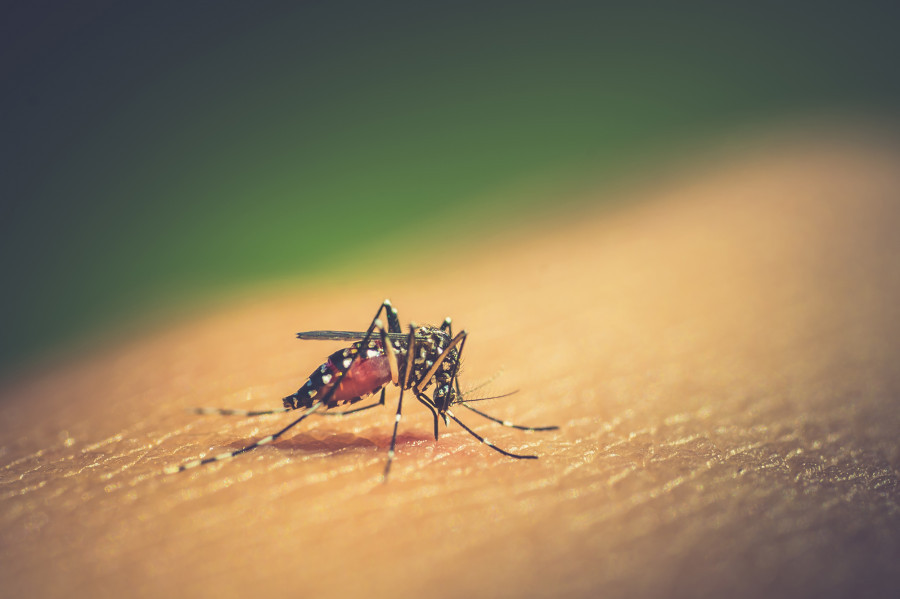Health
Spike in dengue cases leads to acute blood shortages
Central Blood Transfusion Service says patients seek 150–200 pints of platelet-rich plasma and platelet concentrate a day. Health Ministry asks public to donate blood.
Arjun Poudel
With a significant rise in dengue cases throughout the country, blood banks in the Kathmandu Valley have been struggling to meet the growing demand for platelet components.
According to the Central Blood Transfusion Service, popularly known as the blood bank, there are demands for 150 to 200 pints of platelet-rich plasma and platelet concentrate every day.
“As the number of dengue cases is rising every day, so do the demands for platelet components,” said Sanjeev Kumar Yadav, senior technical officer, at the Central Blood Transfusion Service. “We have appealed to organizations and individuals for blood donation.”
Officials at the blood bank said that there is a demand for around 400 pints of blood every day for the treatment of regular patients. With the spread of the dengue virus, the demand has grown up to over 600 pints.
To address the growing demands for platelet components, officials at the blood bank on Monday held a meeting with stakeholders including the officials at the Ministry of Health and Population.
“The Health Ministry will also appeal to organisations and the public for blood donation soon,” said Yadav. “We have also discussed safe transportation of blood to and from outside the districts of the Valley.”
Nepal Voluntary Blood Donor’s Society has also requested the general public for blood donation to address the growing demands for blood for dengue patients.
The Epidemiology and Disease Control Division, said that at least four persons, including a pregnant woman, died of dengue infection, which has so far spread to 75 of the 77 districts in the country.
According to officials, deaths from dengue infection have been reported in Lalitpur, Kathmandu, Kapilvastu, and Dhading districts.
Major hospitals in Kathmandu Valley have been reporting a massive surge in dengue cases of late.
The Sukraraj Tropical and Infectious Disease Hospital said that around 180 patients infected with dengue have been seeking treatment at the hospital every day.
Some hospitals have been forced to accommodate two patients in one bed.
Hospitals have been reporting dengue hemorrhagic fever and dengue shock syndrome.
Dengue hemorrhagic fever can cause internal bleeding and a sudden drop in blood pressure. Doctors say dengue shock syndrome is a dangerous complication of dengue infection and is associated with high mortality.
Officials at Bir Hospital said that 85 to 100 patients infected with the dengue virus have been visiting the hospital every day.
The Epidemiology and Disease Control Division said that 5,029 people have been infected with the dengue virus as of Sunday. The number of infected patients could be 10 times as 90 percent of the cases are asymptomatic, officials said.
Of the total infections, over 70 percent are in 10 districts, including Lalitpur, Kathmandu, and Makawanpur , according to officials. They say office-goers and school children have been infected in large numbers.
Dengue is transmitted by female Aedes aegypti or Aedes albopictus mosquitoes, after they bite a person.
The same vector also transmits chikungunya, yellow fever, and Zika viruses, according to the World Health Organisation.
The UN health body classifies dengue as a major international public health concern.
Mosquitoes that cause dengue breed in clean water and infect people in daylight. Uncovered water tanks and discarded plastic cups and bottles could also shelter dengue-carrying mosquitoes.
According to doctors, mild to high fever, severe muscle pain, rashes, severe headache, pain in eyes, and vomiting are some of the symptoms of dengue.
Abdominal pain, vomiting, bleeding from the gums and nose, vomiting blood and blood in stool, tiredness, and restlessness are symptoms of severe dengue.
Severe dengue is the leading cause of serious illness and death, doctors say.
Disposing of solid waste properly, covering or emptying water storage containers, using personal household protection such as window screens, and wearing long-sleeved clothes are some measures to prevent infection.
With the massive outbreak of dengue infection, the Health Ministry has urged all the agencies concerned to carry out awareness and dengue search and destroy drives.
Nepal has witnessed outbreaks of dengue in the pre-monsoon, monsoon, and post-monsoon seasons, although the post-monsoon period is considered a high transmission season for the virus.
As the monsoon is still continuing and the post-monsoon season is yet to start, health officials say the dengue infection rate could go up in the coming days. The dengue-spreading mosquitoes survive up to 45 days and their entire generation gets infected with the virus, meaning that they can transmit the same virus.
In 2019, at least six people died and over 17,000 were hospitalised with dengue fever. The outbreak, which had started in the pre-monsoon period from Dharan, spread to 68 districts.
The UN health agency says there is no specific treatment for severe dengue, but early detection and access to proper medical care can lower the fatality rate.




 7.12°C Kathmandu
7.12°C Kathmandu














